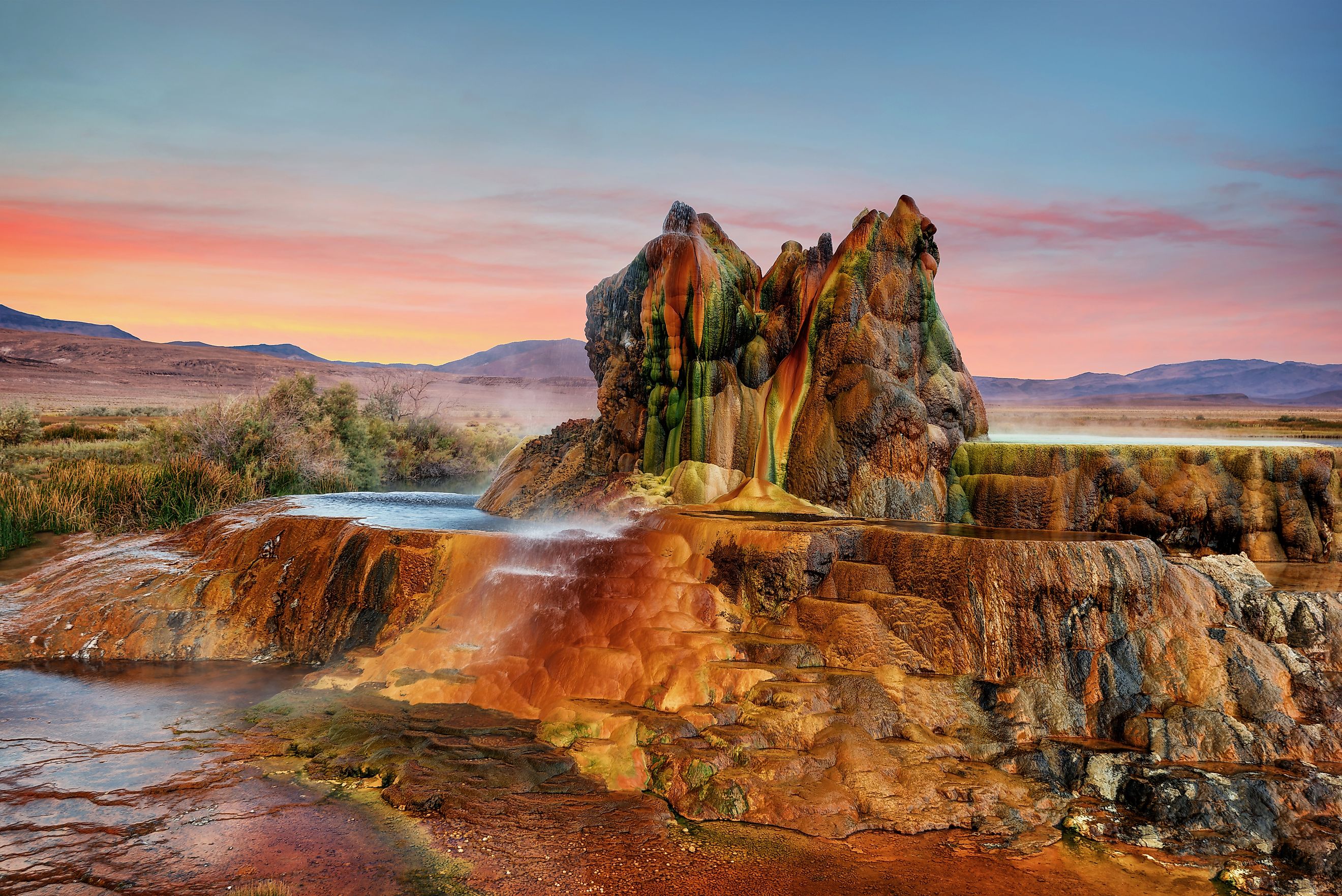
Fly Ranch Geyser
Tucked deep within the Nevada desert, far from the bright lights of Reno or Las Vegas, lies one of America’s most unusual and visually striking geothermal features: the Fly Ranch Geyser. Rising from the cracked earth of Washoe County’s Hualapai Geothermal Flats, this psychedelic plume of steam, color, and heat looks more like a scene from a science fiction movie than a natural landscape in the American West.
But make no mistake—Fly Geyser is real, and its story is as captivating as the kaleidoscopic mound it sits upon.
What Is Fly Geyser?
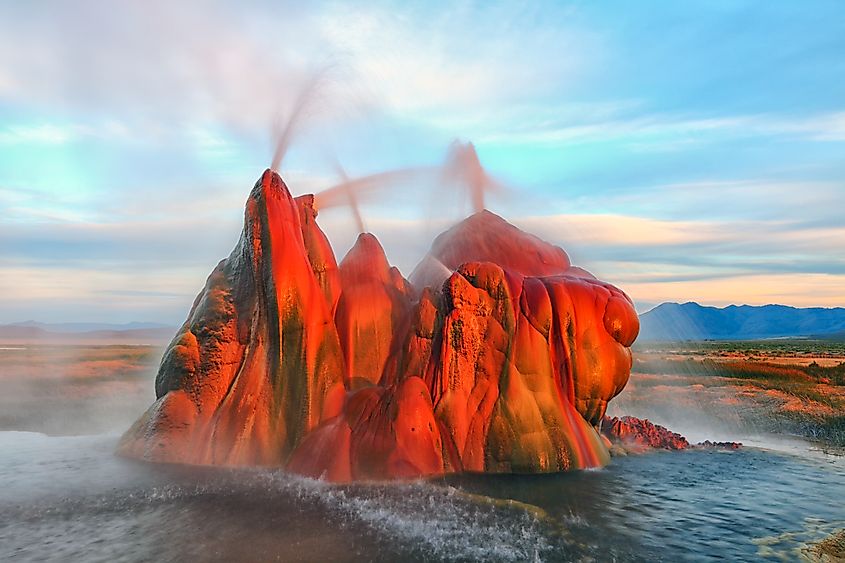
Fly Geyser—often called Fly Ranch Geyser—is a small geothermal geyser located on private land roughly 20 miles north of Gerlach, Nevada, near the edge of the vast and remote Black Rock Desert. The geyser sits on Fly Ranch, a 3,800-acre property purchased in 2016 by the Burning Man Project for $6.5 million. Today, the ranch is slowly becoming an eco-sanctuary and hub for art, sustainability, and exploration.
The geyser itself isn’t massive by height—it only reaches about 5 feet in active water spouts—but the mound on which it sits has grown to roughly 25 to 30 feet tall due to decades of mineral deposits. Its surreal appearance and constant geothermal activity make it one of the most unique natural features in the United States.
The Accidental Birth of a Modern Marvel
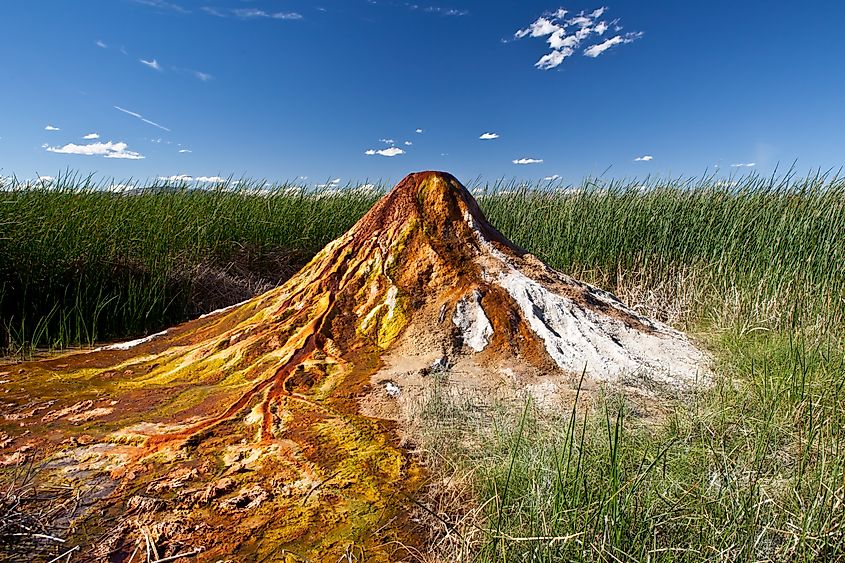
Fly Geyser was never supposed to exist. In fact, it’s an unintentional byproduct of human curiosity and error.
In 1916, a well was drilled on the site in search of irrigation water. Instead, the drillers tapped into geothermal activity. The water discovered was nearly boiling, and the project was quickly abandoned. Left uncapped, the well began depositing calcium carbonate from the mineral-rich water, eventually forming a 10- to 12-foot cone.
Fast forward to 1964, when a geothermal energy company returned to drill again, seeking a renewable power source. This time, the water wasn’t hot enough to justify development. The well was reportedly sealed, but the cap failed. The resulting pressure not only dried up the original geyser but birthed a new one—the Fly Geyser we see today.
From this second eruption, minerals began to build up once more. Over time, they formed the now-iconic mounds and travertine terraces that make Fly Geyser such a visual spectacle.
The Science Behind the Colors
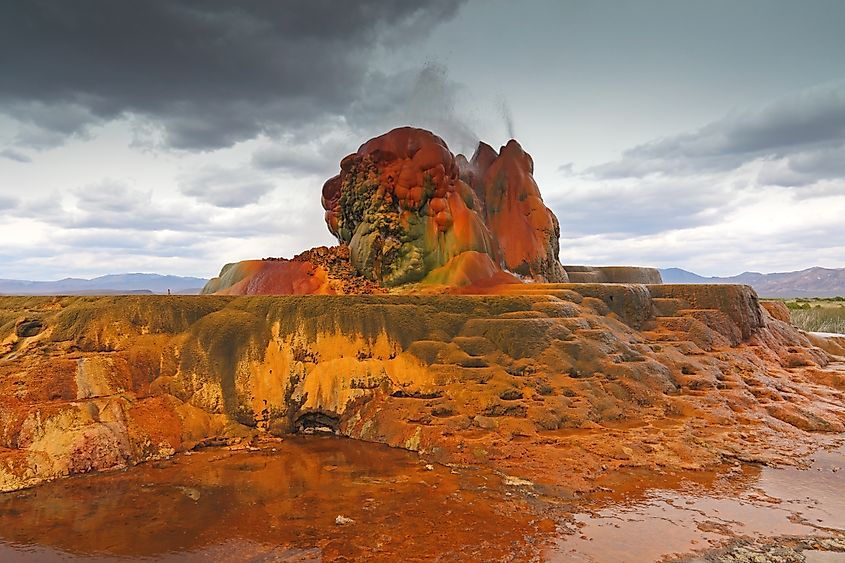
Fly Geyser’s rainbow-like appearance is one of its most striking characteristics. This multicolored palette isn’t paint—it’s biology.
The rocks and surrounding pools are coated in thermophilic algae, microorganisms that thrive in hot, moist environments. These algae take on brilliant hues ranging from bright green to deep red, depending on the temperature and mineral content of the water.
In addition to the algae, the geyser’s water contains exceptionally high levels of silica. According to Carolina Muñoz Saez, a geoscientist hired by the Burning Man Project to study the site, Fly Geyser is producing quartz inside its cone at a rate far faster than normal. “Quartz usually takes up to 10,000 years to develop in geysers,” she noted, adding that Fly Geyser is truly unique in her fieldwork experience.
Constant Motion in a Desert Landscape

Fly Geyser is no dormant relic—it’s alive. The geyser constantly sprays hot water, often shooting up to 5 feet in the air. This non-stop activity has resulted in the creation of a complex network of travertine terraces and shallow geothermal pools that stretch across 74 acres.
These terraces, formed from mineral buildup, are dynamic and ever-changing. New layers are continually deposited by the hot, mineral-rich water that flows from the geyser’s multiple vents. The entire formation seems to be growing, morphing, and reshaping itself each year—a living sculpture carved by earth, heat, and time.
The temperature of the water exiting Fly Geyser can reach over 200°F, which is standard for geysers at high elevations, but still hot enough to make it unsafe for bathing or close physical contact.
A New Chapter: The Burning Man Project
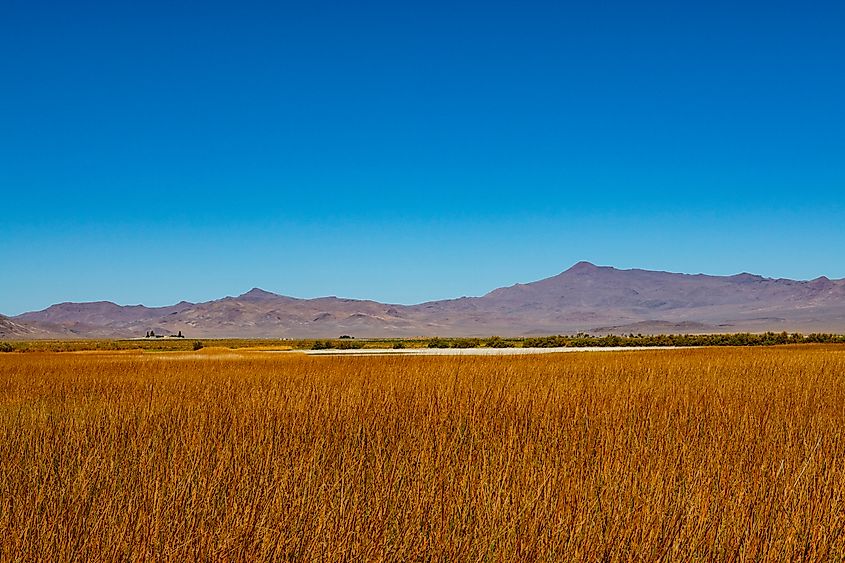
When the Burning Man Project acquired Fly Ranch in 2016, the goal wasn’t just to preserve the geyser, but to reimagine the land around it as a space for regenerative culture and ecological stewardship. The organization, best known for its annual festival in the Black Rock Desert, sees Fly Ranch as an opportunity to connect art, nature, and community in a long-term, sustainable way.
In 2018, they began offering limited public access to Fly Ranch. These aren’t your typical tourist excursions. Instead, visitors can sign up for three-hour, small-group nature walks from April through October. These guided tours are hosted by Friends of Black Rock-High Rock, a nonprofit that collaborates with the Burning Man Project to oversee conservation and educational efforts in the region.
Tours are intentionally low-impact and highly informative. They not only bring visitors face-to-face with Fly Geyser, but also explore the broader landscape of Fly Ranch, including its diverse flora and fauna, geothermal features, and ecological initiatives.
A Landscape Beyond the Geyser
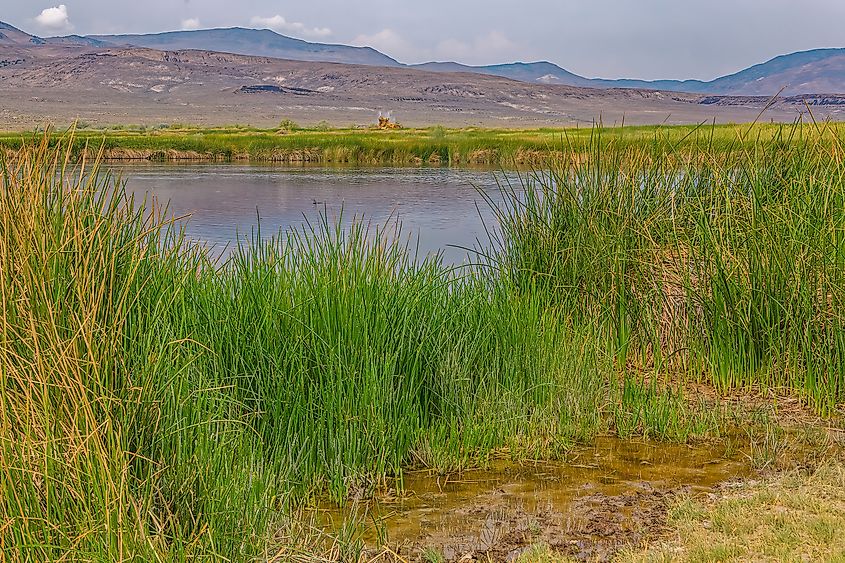
While Fly Geyser is the main attraction, it’s not the only geothermal oddity in the area. The surrounding region is dotted with similar formations—less colorful, perhaps, but geologically significant.
In fact, a previous well drilled in 1917 created a separate geyser nearby. That geyser once stood as a 12-foot-tall pillar of calcium carbonate. It ceased erupting in 1964, likely because the new Fly Geyser altered the underground pressure dynamics.
The area as a whole is part of the Hualapai Geothermal Flats—a geologically active region fed by a deep reservoir of hot rock caused by tectonic rifting and faulting. This natural underground furnace continues to shape and reshape the land above it in subtle but powerful ways.
Planning Your Visit
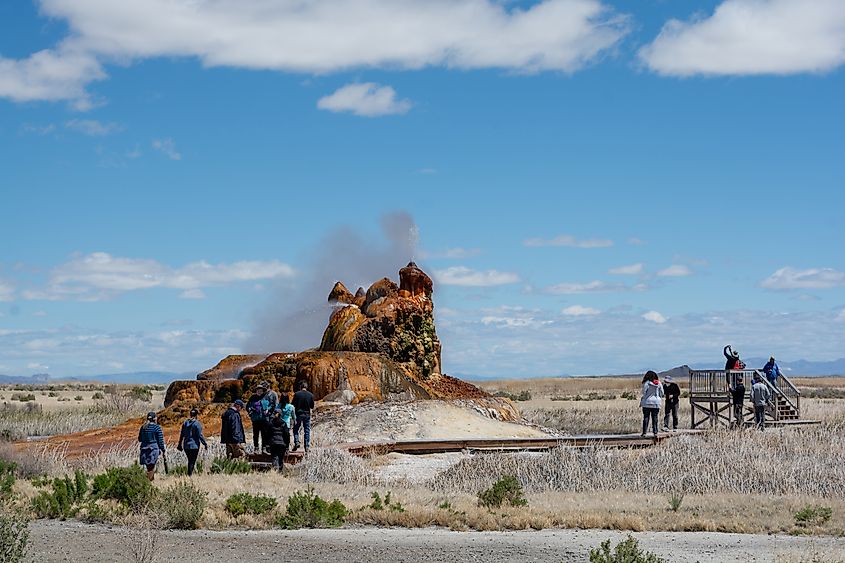
Fly Geyser is not visible from the main road and cannot be accessed freely by the public. Because it sits on private land, all visits must be arranged through official Fly Ranch nature walks.
Here’s what you need to know:
-
Tour Season: April to October
-
Duration: 3 hours
-
Organized by: Friends of Black Rock-High Rock
-
Access: On-foot, small groups only
-
Location: Near State Route 34, about 25 miles north of Gerlach, Nevada
Visitors should be prepared for desert conditions—dry air, fluctuating temperatures, and unpaved walking paths. The nature walks are designed to be immersive and respectful of the land, offering both stunning visuals and a deeper understanding of geothermal and ecological processes.
All ticket proceeds are treated as donations, helping to fund stewardship efforts and further research at Fly Ranch.
Why Fly Geyser Deserves a Spot on Your Bucket List
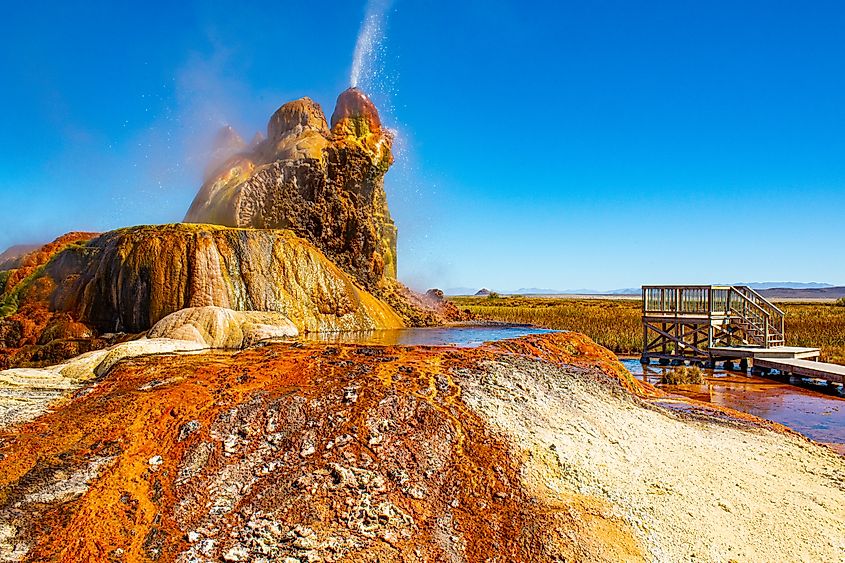
There’s no shortage of geothermal wonders in the American West—Yellowstone’s Old Faithful and California’s Lassen Volcanic springs come to mind—but Fly Geyser stands apart for its accidental origin, alien beauty, and deep connection to modern art culture.
It’s also a symbol of transformation. What started as a failed well has grown into one of the most visually captivating and biologically rich geothermal sites in North America. Through the stewardship of Burning Man and the Friends of Black Rock-High Rock, Fly Ranch is being reclaimed as a place of wonder, education, and inspiration.
If you’re looking for a destination that combines natural science, surreal scenery, and a touch of countercultural history, Fly Geyser is worth the pilgrimage.
Frequently Asked Questions
Can you visit Fly Geyser on your own?
No. Because it’s on private land, all visits must be part of an official guided tour through Fly Ranch.
When is the best time to visit Fly Geyser?
The nature walks are offered from April to October, when weather conditions are most favorable.
How tall is Fly Geyser?
The geyser itself shoots water up to 5 feet, but the mineral mound on which it sits is up to 30 feet tall.
What causes the colors on the geyser?
Thermophilic algae thrive in the hot water, creating brilliant reds, greens, and yellows on the surface of the rocks.
Is it safe to touch the water or walk on the geyser?
No. The water is extremely hot, and the mineral formations are delicate. Visitors must stay on designated paths.